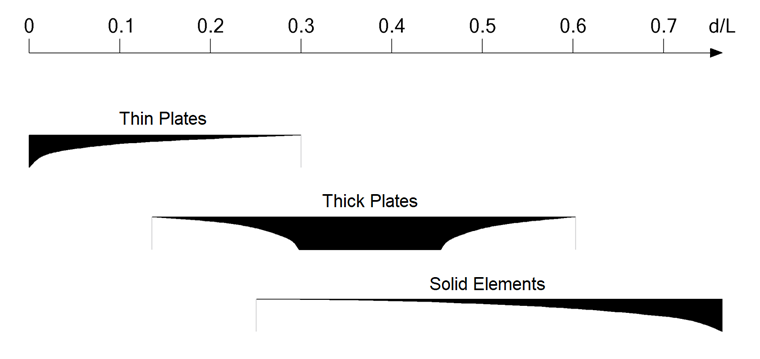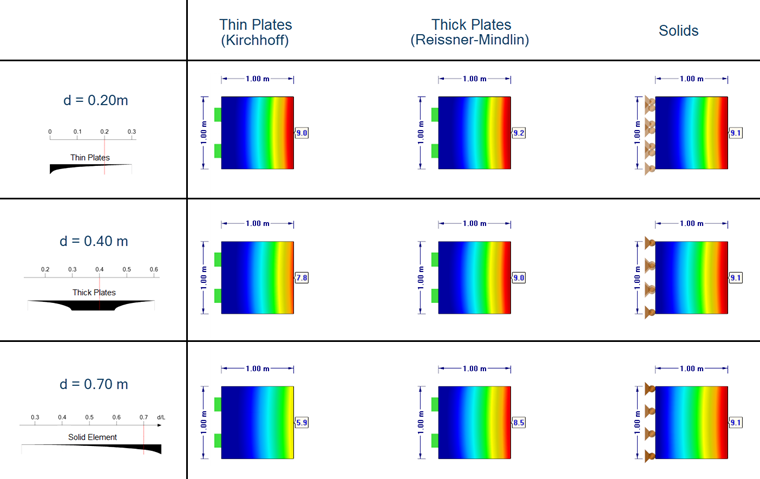When designing structural components using the Finite Element Method (FEM), you can choose between surfaces and solids in RFEM. A distinct advantage of surfaces is the calculation time, as the finite elements are only defined in the surface plane. The third dimension - that is, the thickness - is considered as a physical property in the calculation. Thus, a surface can be considered as mathematical simplification. Furthermore, surfaces can be meshed more easily than solids (Jacobi matrix).
The plate elements are divided into two types of elements. Whereas in the classical thin plate theory (Kirchhoff), shear deformations due to shear forces are neglected, special extended methods apply for the thick plate theory (Reissner-Mindlin). In the case of thin plates, the pure bending effect is dominant. Therefore, the simplified bending theory is also sufficient. As the thickness increases, the component of the transversal shear effect on the load-bearing capacity increases.
Starting at certain thickness, the error when neglecting this component is so large that it is absolutely necessary to have a higher theory of the thick plate. Whether a plate is considered as "thin" or "thick" does not depend on the "dimension to thickness" ratio of the individual finite element, but on the conditions in the structural system. In addition to the plate thickness, the main influencing factors include the span lengths (length, width, radius), the support type and the load type, as well as their distribution. Due to the multitude of influences, it is not possible to specify a mandatory value.
Image 01 shows a guideline describing the validity of the corresponding elements. The "d" value is the thickness of the structural component and "L" is the length of the structural component or the distance between the supports. The d/L ratio indicates when the element is valid for an analysis. When the d/L is large, the shear deformation is a critical parameter and the user should preferably use solids. If the d/L is small, the shear deformation has no significant influence and surface elements are the most effective choice.
In Image 02, the calculations were performed using different elements. The top view is displayed so that the deformations can be interpreted in the image plane. For the small d/L ratio of 0.2, the deformations correspond very well to all three variants. If d/L = 0.4, the differences between the thin and the thick plate calculations are already visible. In the extreme case of d/L = 0.7, the difference of the thick plate to the solid can also be observed. The loads have been selected in such a way that the same deformation is obtained for all solid elements in order to create a comprehensive expression.

